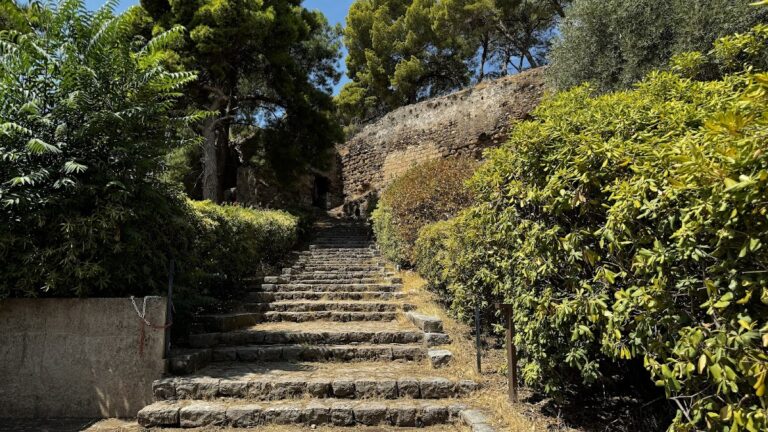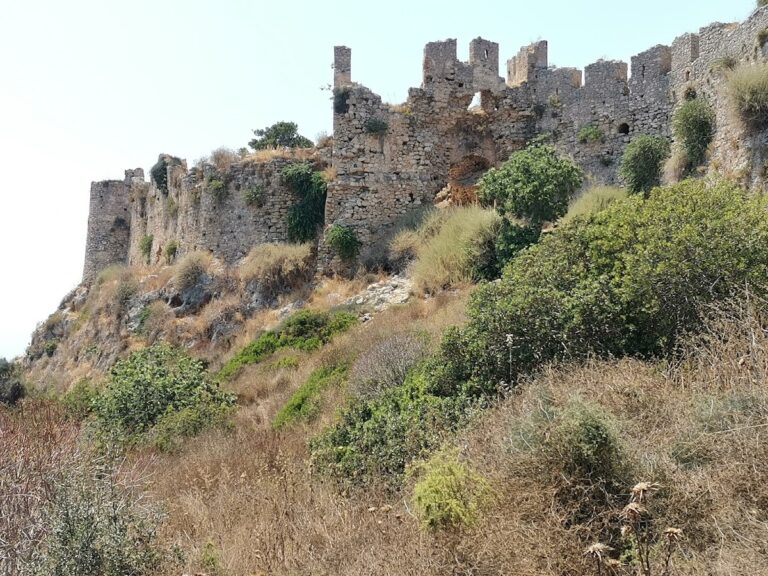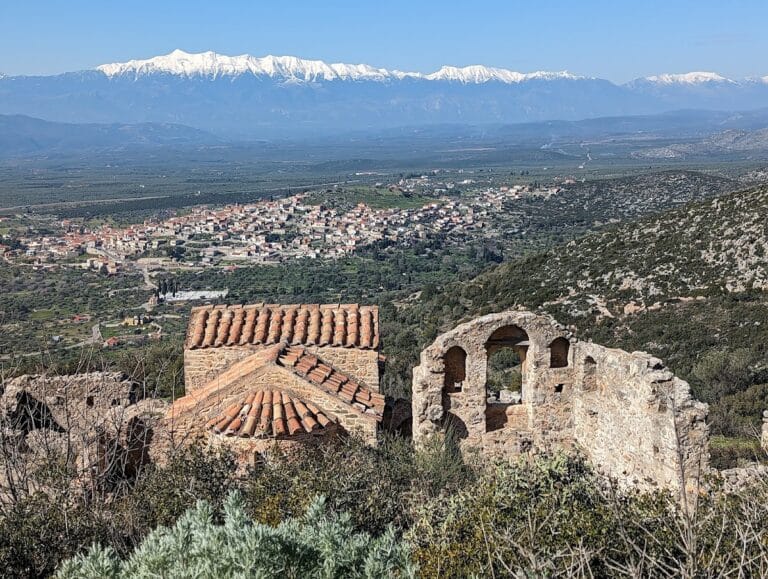Castle of Koroni: A Historic Fortress in Greece
Visitor Information
Google Rating: 4.5
Popularity: Medium
Google Maps: View on Google Maps
Country: Greece
Civilization: Unclassified
Remains: Military
History
The Castle of Koroni is located in the municipality of Koroni in Greece. It was built by the Byzantines on the site of an ancient acropolis in the Peloponnese, constructed during the 6th or 7th centuries AD. This site is linked to ancient Greek history, as it stands on the remains of Asini, one of seven cities said by Homer to have been offered by Agamemnon to Achilles during the Trojan War.
Following the fall of Constantinople during the Fourth Crusade in 1204, the Venetian Republic seized control of Koroni. It quickly became a thriving naval and commercial outpost. Officially becoming part of the Principality of Achaea in 1205, Koroni prospered through trade in luxury goods such as kermes dye and silk and served as a stop for pilgrims traveling to the Holy Land. In 1209, Geoffrey of Villehardouin transferred Koroni to Venetian administration, which initiated extensive rebuilding and strengthening of the fortress over the next hundred years. Venetian additions included a large eastern building and a distinctive double semicircular bastion on the northeast side to protect the harbor.
Throughout the 14th century, the castle’s strategic position meant it was a hub for Venetian maritime operations, especially in defending convoys against Genoese rivals and pirates. Despite their efforts, the Ottomans repeatedly tried to take the fortress from 1337 onwards. Venice was compelled to pay tribute but maintained control until 1500, when following a major naval battle at nearby Modon, Ottoman forces captured Koroni during the Second Ottoman-Venetian War.
The fortress saw a brief change of hands in the 16th century. In 1532, a combined fleet under Admiral Andrea Doria, allied with Emperor Charles V, took Koroni. However, after a siege led by Ottoman commander Yahya Pashazade Mehmed Bey, the Ottomans regained control in 1534, allowing the Spanish defenders to retreat peacefully. Under Ottoman rule, the castle housed a garrison of approximately 300 soldiers, with a small Muslim administration coexisting alongside a majority Christian and Jewish civilian population. Ottoman authorities reinforced the southern and southeastern defenses with two large circular bastions to bolster security against naval threats.
Venice reclaimed Koroni in 1685 during the campaigns of Admiral Francesco Morosini, holding it until 1715 when a treaty returned the fortress to Ottoman sovereignty. The castle suffered extensive damage from bombardments during the Ottoman siege of 1770. As the 18th century progressed, its importance waned, though Koroni continued as a regional center for exporting silk and olive oil. By the early 19th century, however, trade declined sharply, and the port was no longer well defended.
During the Greek War of Independence, Greek fighters unsuccessfully attempted to seize the castle. It was finally liberated in 1828 by French forces led by Marshal Nicolas Joseph Maison. In the decades that followed, Koroni experienced population decline, partly due to emigration. Inhabitants increasingly concentrated around the castle walls, the hill overlooking the port, and the nearby beach.
Remains
The Castle of Koroni occupies a roughly triangular area, encircled by strong defensive walls interspersed with square towers and storage spaces for gunpowder, known as powder magazines. Its fortifications reflect layers of construction from Byzantine, Venetian, and Ottoman periods. One of the castle’s northern bastions was deliberately destroyed by German troops during World War II, leaving only ruins in that section.
The castle’s main entrance is set within a large square bastion featuring a pointed arch at the base of the gate. Above the archway lies a guardroom equipped with a narrow vertical slit for archers or musketeers, allowing defenders to protect the entrance. Historical records note that the entrance once displayed pilastered gateways—monumental porch-like structures—along with a relief bearing the Lion of Saint Mark, the emblem of Venice, positioned over the arch.
Inside the fortress are several notable religious buildings that showcase the site’s layered history. The Byzantine Church of Hagia Sophia is a three-aisled basilica supported by rows of columns. It stands atop the remains of an ancient temple dedicated to the god Apollo, as well as an earlier Christian church, indicating a continuous sacred use of this spot through centuries.
Another significant church within the castle is Saint Charalambos, originally dedicated to Saint Rocco. Built during the second Venetian period, this modest one-story structure with a wooden roof has served various religious functions. Initially a Catholic church, it later became a mosque during Ottoman rule and now operates as an Orthodox Christian church, embodying the changing religious landscape of the site.
The Panaghia Eleistria church, constructed around 1900 with a simple wooden roof, is dedicated to the city’s patron saint. It represents the continuing religious traditions of Koroni into the modern era.
Additional features within the castle grounds include Venetian-era cisterns that collected and stored rainwater and the ruins of a Turkish bath, attesting to the daily life and hygiene practices during Ottoman occupation. A marble column known as the Resalto stands as a memorial to Greek fighters who lost their lives during an unsuccessful siege in 1824, highlighting the castle’s role in the Greek struggle for independence.
The castle’s defensive structures evolved through multiple periods. The original Byzantine fortress occupied the highest hilltop, while the Venetians added a large fortified area to the east with robust walls and a distinctive double semicircular bastion protecting the northeast, guarding against naval attack. Ottoman builders strengthened the southeastern defenses by creating a second line of walls and adding two circular bastions, one of which was later demolished by Venetian commander Morosini upon retaking the castle in 1685.
On the western edge, a Venetian bastion constructed in 1463 stands as one of the oldest extant parts of the fortifications. This structure underwent several modifications through subsequent Venetian control phases, including the later period from 1685 to 1715.
At the western end of the castle precinct is the Old Calendarist Monastery of the Holy Forerunner (Timios Prodromos), an early 20th-century building reflecting more recent religious activity within the historic site. Together, these remains offer a vivid record of Koroni’s military, religious, and social history across more than a millennium.










